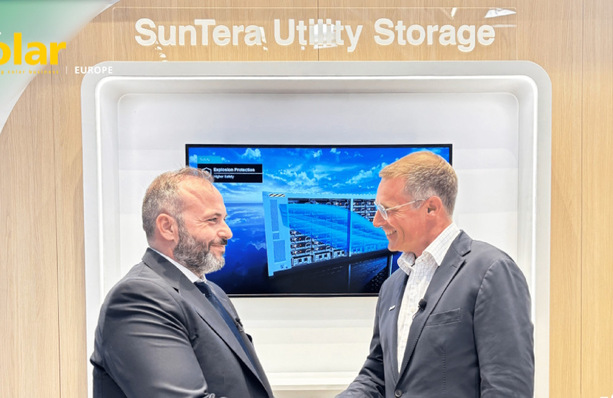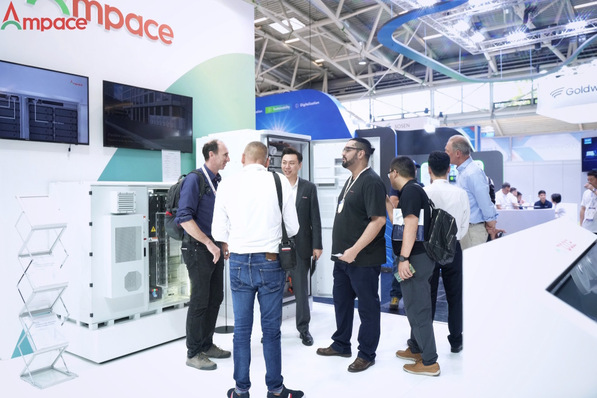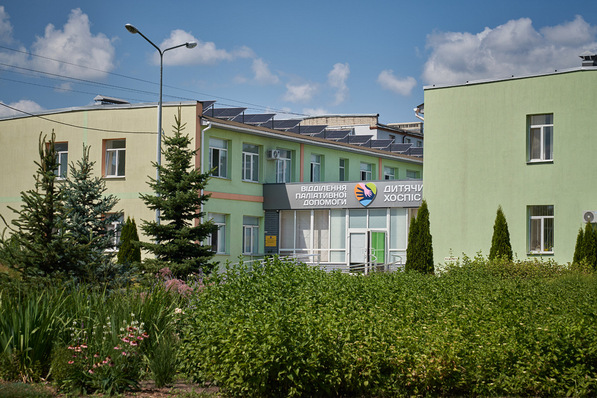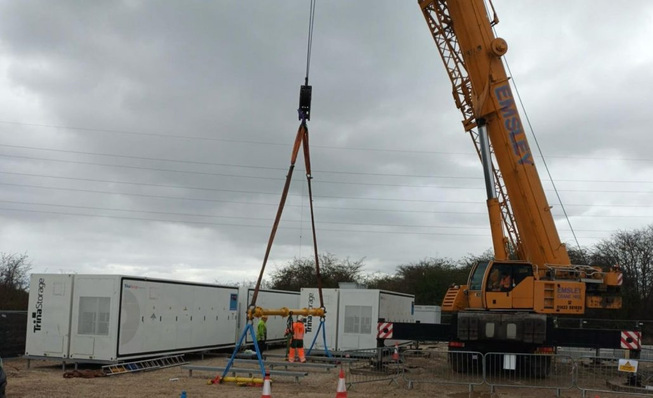How is the demand for storage systems currently developing?
Franz-Josef Feilmeier: Based on rapid growth with bottlenecks, price increases and many newcomers along the value chain, we believe that demand in the home storage market has stabilised at a somewhat reduced level since the first half of the year. In the industrial storage market, for example in industrial companies and charging parks or in solar or wind parks, the dynamic growth in demand is only just beginning.
What further developments do you expect in the coming months?
We assume that factors such as the possibility of repowering roof systems will lead to high demand in all self-consumption segments of photovoltaics. Customers here will then operate old and new systems on the same roof and often go into sector coupling, which will direct demand towards storage units with growth and adaptation potential in particular. We also anticipate great demand for storage units for charging parks, especially for workplace charging. In addition to the storage projects in the innovation tender, we are currently seeing a large number of large-scale storage systems at substations or solar parks in the project development phase, which will then be marketed on the electricity exchange.
See also: Large-scale storage from used batteries of EVs
How are the prices for energy storage systems developing in the individual segments?
Prices have already fallen massively in the first stages of the value chain.The price of lithium carbonate, for example, has halved since the middle of the year. Compared to the price highs a year ago, it has actually fallen by 75 per cent. Accordingly, battery cells and battery modules now cost significantly less than they did six months or a year ago.
Does this mean that storage units will soon be cheaper for end customers?
The problem is that these costs often do not yet reach the installer.This is because the dealers and importers have full warehouses and have bought the products at high prices.Devaluing these stocks will hurt and clear the market, but it is unavoidable. By the middle of this year, we will see a general price level on the market that only small manufacturers selling out or successful manufacturers with correspondingly low stocks on the market will be able to achieve.
How is the market situation developing with regard to competition from the Far East - are more Chinese manufacturers entering the market, for example?
That was actually the case at the end of 2022 and up until Intersolar and EES. However, they are now clearly realising that there is nothing more to be gained from the home storage market in Europe and are withdrawing from the market again - often at painful, massively reduced sales prices. The entire market is currently undergoing a tough consolidation where products and manufacturers without sufficient focus on the German or European market per se, but also without a focus on the home storage product and the needs of customers, are being actively weeded out. In the end, we will have far fewer Chinese suppliers on the market in this country and see a higher domestic value-added share in storage units and energy management systems.
What does this mean for Fenecon?
We can see, for example, that wholesalers are currently trying hard to reduce their stocks of batteries. At the same time, some manufacturers are desperately trying to deliver and invoice the batteries once they have been ordered from retailers - this is causing great tension between manufacturers and retailers. At this point, we are dealing with our partners in a fair and forward-looking manner and are fortunate to have a high level of demand from end customers and installers, which is filtering through the trade. If these dealers now streamline their storage portfolio for the future, we will be there and happy to continue working with the partners that suit us. Our training courses on energy management functions are currently in high demand, as the market shakeout will be particularly evident in this area.
In your view, how stable is the European storage industry - also with regard to battery cell capacities?
The leading European home, commercial and industrial storage manufacturers are strongly positioned in their respective segments and all have similar production depths. Systems and electronics are often developed and software programmed here. However, the battery cells usually come from China. And even if large capacities for battery cell production are currently being built up in various European countries, these are generally intended primarily for the electric vehicle industry. LFP battery cells for home storage systems in particular will therefore continue to come primarily from China.
Will this change?
The wave of consolidation that has been unleashed will also catch one or two large manufacturers from China off guard and lead to collateral damage in the retail sector and among installers in this country. European storage manufacturers will emerge from this wave stronger overall. They will then have the potential to grow further into the value chain and invest accordingly in production capacities in Germany.
Also interesting: Utility-scale battery storage to stabilize the Estonian power grid
Where do the battery cells that Fenecon uses in the storage units come from?
The LFP cells in the home storage systems come from China from our battery partner CATL, which now also produces automotive battery cells in Germany and Hungary. In the coming year, however, we will largely bring the production of battery modules to Germany in order to build up resilience and added value here. More and more cells and modules for large storage systems are already coming from Europe. However, as we use these as obsolete products, they are always already in the country and this is where the decision is made as to whether they will be recycled or used in industrial storage systems.
What technological developments will be relevant in the coming months - for example, with regard to storage technology, such as sodium instead of lithium?
CATL is a leader in sodium ion technology and we have jointly undertaken to bring this battery technology, including the necessary developments in system design, to the German market. I think we will also see this technology from other directions. Initially, it will not be possible to capitalise on the potential cost advantages of this young technology. But as an industry, we should be concerned about reducing the need for potential conflict raw materials and tapping into the almost unlimited potential of sodium for storage. I expect lithium iron phosphate and sodium ions to coexist in the home storage segment in the coming years. And the market for large-scale storage systems will be dominated by the available electric vehicle obsolete batteries anyway.
The questions were asked by Sven Ullrich.








